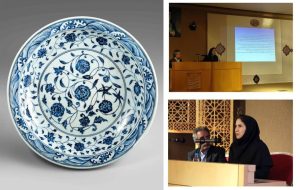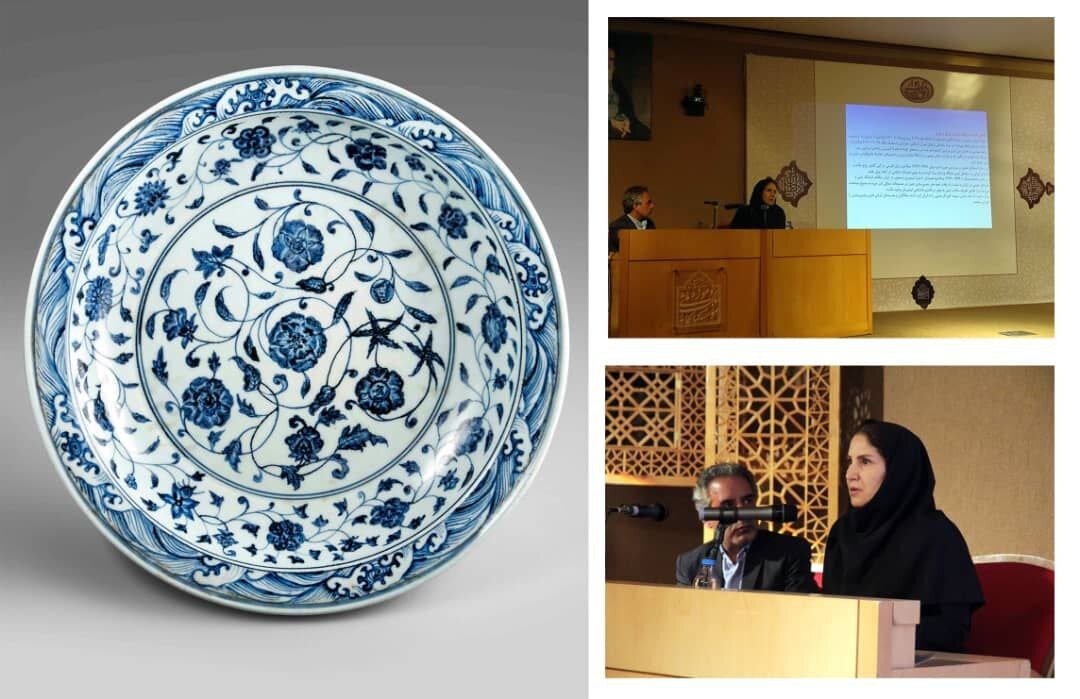Bridging cultures: The significance of Chinese ceramics in Iran’s National Museum
TEHRAN – On Tuesday, a specialized meeting titled “Silk Road and Cultural Exchanges between Iran and China” was held alongside a joint exhibition between the Shanghai Museum and the Malek Library and National Museum. Four speakers shared their insights on the cultural connections between the two great nations. One of which was Leila Khamoushi, an


TEHRAN – On Tuesday, a specialized meeting titled “Silk Road and Cultural Exchanges between Iran and China” was held alongside a joint exhibition between the Shanghai Museum and the Malek Library and National Museum.
Four speakers shared their insights on the cultural connections between the two great nations. One of which was Leila Khamoushi, an expert on Islamic period artifacts at the National Museum of Iran, who presented a compelling narrative about the collection of Chinese artifacts from the Sheikh Safi al-Din Ardabili Shrine kept in the national museum of Iran.
Khamoushi highlighted the historical significance of these ceramics, tracing their journey from being endowed to the shrine to their transfer in 1935 to Dar al-Fonun and later to the National Museum of Iran. She also provided an overview of the trade relations between Iran and China, particularly emphasizing the role of the port of Siraf in early Islamic centuries during the expansion of maritime trade routes.
Khamoushi pointed out that during the Yuan dynasty, Persian was somewhat familiar in China, and Iranian merchants actively participated in the trade, fostering the growth of Islamic culture in China. She noted the influence of Chinese ceramics during the Ming dynasty, a time that coincided with the Timurid and Safavid periods in Iran, where the artistry of Chinese porcelain saw significant evolution and integration with local styles.
In the concluding part of her presentation, Khamoushi addressed the various seals and marks on Chinese ceramics, categorizing them into Chinese and Iranian. She explained that while Chinese marks usually indicate the dynasty or the manufacturer, Iranian seals include significant inscriptions, such as those from Shah Abbas, showcasing 300 years of porcelain-making and cultural exchange between Iran and China.
Another speakers at the event, Hassan Bastani Rad, head of the Silk Road Research Center at Shahid Beheshti University, discussed Iranian heritage on the Silk Road in China and cultural exchanges between the two countries.
Siavash Sattari, president of the Iranian Puppetry Artists Association, spoke on the evolution of puppetry along the Silk Road.
Furthermore, Ali Mohammad Saghafi, head of the China Studies Desk at the Islamic Culture and Relations Organization, addressed Iran’s historical and cultural artifacts across China.
According to organizers, the meeting served to reinforce the importance of these artifacts in illustrating the deep historical ties and mutual influences that have shaped the artistic and cultural landscapes of both nations.
The National Museum of Iran, established in 1937 in Tehran, serves as the country’s principal museum and a vital institution for preserving and showcasing Iran’s archaeological and cultural heritage. The museum houses a diverse collection of artifacts that span from prehistory to the Islamic era, including invaluable pieces such as ancient pottery, textiles, and coins. As a center for research and education, the National Museum plays a crucial role in fostering an understanding of Iran’s rich history and its connections to other cultures, particularly through significant collections like the Chinese ceramics that highlight the interactions along the Silk Road.
AM
